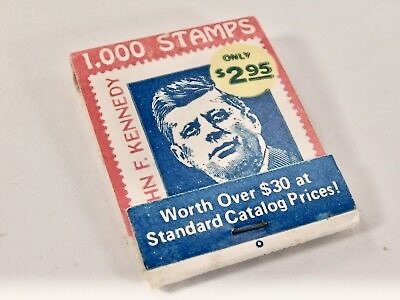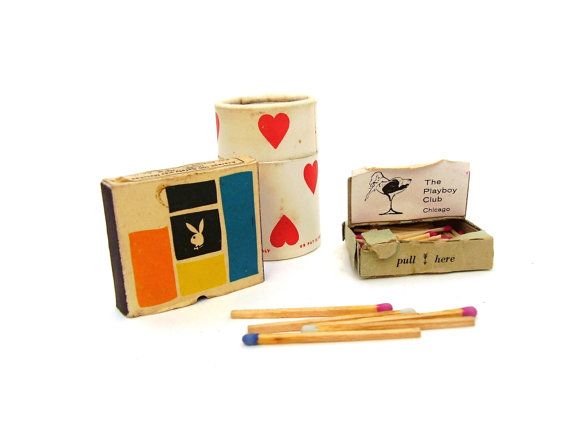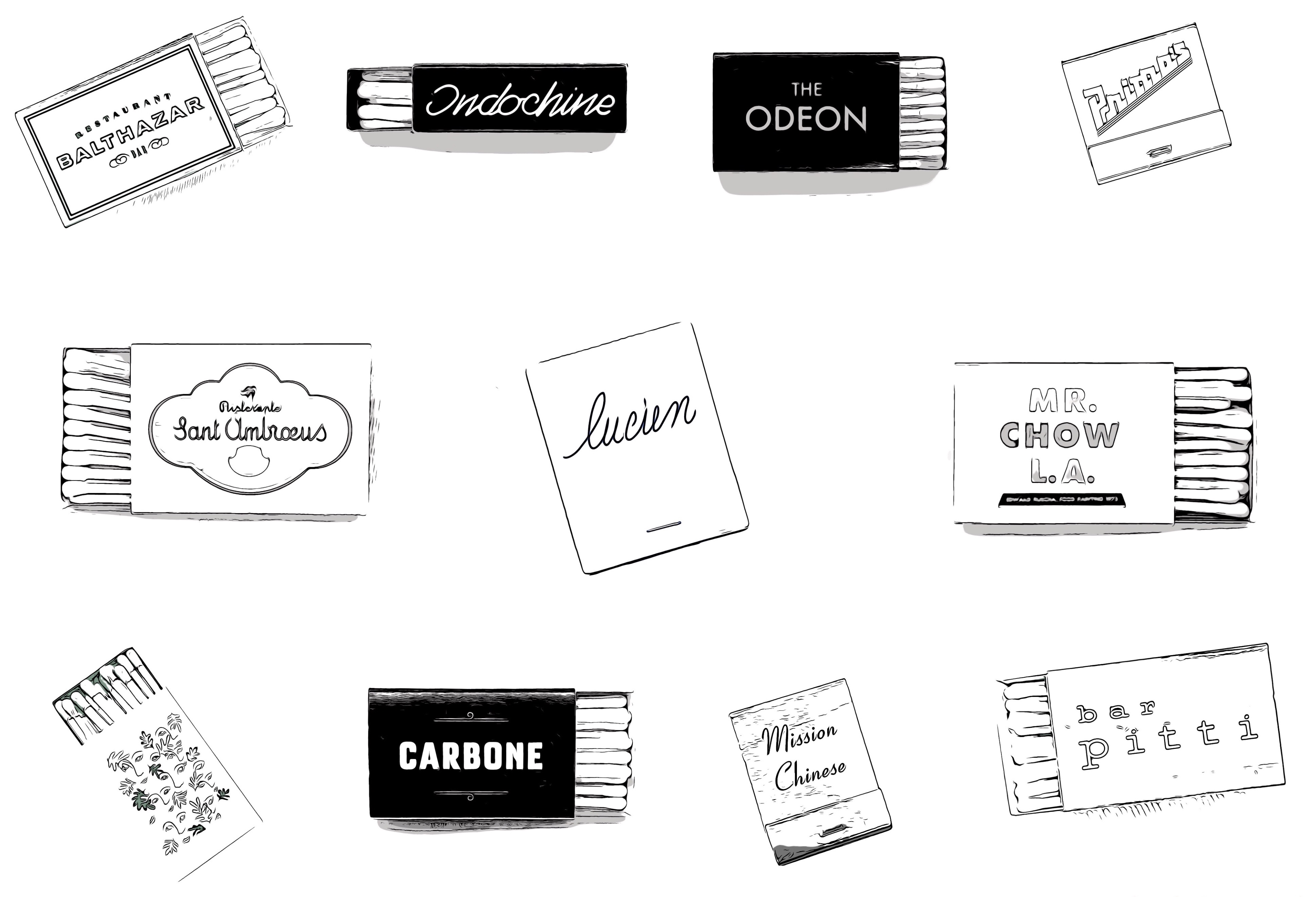You’d be surprised to discover how many accounts exist on Instagram for people who collect the most absurd stuff: coffee cups, pins, coins, clothing labels, stamps, postcards, menus — you name it. I actually happen to be one of them because I am now a phillumenist. Have you ever heard of this word? Me neither, until a few years ago, when I founded with my mother @oh_what_a_match, an Instagram account on our collection of matches born with the hope of bringing together people from different industries in a collective appreciation of phillumeny. A phillumenist, is a person who collects match-related items, like matchbox labels, matchboxes, matchbooks, or matchbook covers. People from this world who take this pastime very seriously not only like to collect matches of all sorts but also bid for them, especially their match covers, exactly the same way as other collectors who gather at major auction houses like to bid for art, antiques, watches, wines or cars.
The Rathkamp Matchcover Society (RMS) is the largest and the oldest phillumenic organization in North America dating back to 1939, with collectors and collecting clubs in almost every part of the globe. Hardcore matchbook aficionados, which in 1985 amounted to 7,000 worldwide according to Seymour Shedlow, vice president of the Windy City Matchcover Club, reunite every year at the various RMS conventions held all over the world to trade, bid, sell and buy match covers. They are constantly expanding the hundreds of matchbook categories to suit their own specific interests. From political and military covers dating back to the 1950s to Playboy and personality covers, these memorabilia are not only collectibles for their own sake but something educational as well: “History, geography, politics, business, county and state administrative structure, and so much more...they’re all packed into those little pieces of cardboard,” as it reads on the RMS’s website.
The society was at its peak in the 1970s-1980s with around 2,500 members. It has shrunk to about 450 members, primarily in the United States and Canada, with still some matchbook-collecting organizations in all corners of the world, from Europe and Asia to Australia and South America. Marc Edelman of Philadelphia, former president of the Rathkamp Matchcover Society says that, “There are less smokers and places to smoke, so there’s probably a large number of young people who don’t know what a matchbook is.” He continues, “But matches have a lot of uses other than smoking,” and I can’t help but agreeing with him.

Vintage John F. Kennedy stamp matchbook

Vintage Play Boy matches
I first came across this peculiar subculture of matchbook collecting in 2017, when a few days after the New Year my mother and I decided to empty out on the floor of our house in Switzerland a dusty, forsaken bin containing tons of matches from my parents’ time in New York in the ‘80s: Charlie O’s, Florent, @mrchow, @i_tre_merli, MK—some of these places closed down, some didn’t. My grandparents, following in my mother’s footsteps, had also started building up an extensive matchbook collection from their travels around the world in those years. When I was young, whenever I went to my grandparents’ apartment in Italy, I remember always being attracted by those two large glass jars filled with colorful matchboxes of all sizes laying on top of my room’s shelves. Was it destiny calling? Fast forward to today and you got me, daughter and granddaughter of the family matchbook fad.
With the launch of OH, WHAT A MATCH! in 2017, I have also started putting together a matchbook collection of my own, coming to add my personal 21st century findings to the more vintage ones belonging to my mother and grandparents. The way my mother and I fashion our account is by photographing our matches on disparate backgrounds that we think might closely resemble and evoke the ethos of the place these little mementos belong to. A matchbook from the ‘80s iconic French-Vietnamese restaurant in New York @indochinenyc is placed on a banana leaf wallpaper recalling the exoticism of the space, while a miniature Marlboro matchbox is snapped on a burnt brown leather couch suggesting tobacco smoke.
Three years ago, after talking on the phone with the founder of @thematchgroup Joe Danon, a pioneering producer of matches with over thirty-two years of experience in the industry, we agreed that these tiny creations seem to have made a comeback in these past five to seven years. As a longtime phillumenist himself—with a personal collection of vintage matches numbering in the 10’s of thousands — Joe was telling me that he mainly attributes this revival of match-related items to the rise of candle manufacturing over the last decade, which has become at present a multibillion dollar industry. The rise in demand for aesthetically pleasing, scented candles has automatically called for an overproduction of matches to light them with.
Many candle businesses have started to add free branded matchboxes to the packaging of the candles they sell. It’s a smart branding idea, and thanks to that, they also found a way to differentiate themselves in the candle market in order to better please their customers, providing them with the full sensorial experience of what goes into lighting a candle with a box of matches. Influencers from the beauty, travel, lifestyle, and fashion industries are now posting pictures of matches from their favorite spots alongside candles, beauty products, books and disparate knick-knacks scattered on their coffee tables.
But matches are not originally known for their lifestyle presence on social media platforms like Instagram. Their logo-bearing, one of a kind graphic designs are what actually make them recognized as objects for business promotion worthy of attraction and collection. Numerous bars, restaurants, hotels and stores in New York and the US at large are back to using matches as insignia to advertise their businesses after a period of dry spell in the late ‘90s and early 2000s—right when the smoking bans were first put into effect. These freebies are the perfect marketing device for businesses to get their name in front of people without spending a lot of money. Customers are known to distribute them to their friends and family as a method to recommend a favorite restaurant, club or vacation spot they picked them up from.
“As an advertising vehicle, restaurant owners have learned that toothpicks don't cut it. Business cards don't cut it. They just don't have the same perceived value," says Joe Danon in an interview in The Baltimore Business Journal from 2000. "You can pay a dollar for a business card and still get better value from a 5-cent matchbook because it is in essence a functional business card. It is something that offers utility for everyday use.” It is then no wonder why the matchbook industry is more alive and well nowadays than many years ago when bans were first implemented and smokers still existed. Tobacco smokers have always preferred to rely upon lighters to ignite their cigarettes and the idea behind matches being primarily a smoker’s item has been an erroneous one.
Besides the functional aspect, the emotional experience ascribed to matches by their collectors and customers it is of no less importance. People love to get matches as takeaways, either to be left with the reminder of a fabulous night, an amazing dinner or a wonderful stay. Tara Leydon, a social media maven based in Toronto and one of our fellow phillumenists and followers says, “I have been collecting matches for a little while now. I love getting matches from places I have traveled to, whether it’s a restaurant I loved or a hotel I stayed at or a shop I visited. They are a nice keepsake to remember a trip or a special occasion.” Weddings, birthdays and other life events are other special occasions to give out these little souvenirs to keep up with our nostalgic obsession of wanting to be remembered.
It is ultimately safe to assume that both the surge of candle businesses and the advent of new social media platforms like Instagram have helped with the rise of this niche market from the brink of oblivion. Over the 120 years that they have been in existence, matches are now back to being popular both online and offline, and to being used in our homes to light candles, incense and tobacco, or just to add a touch of color to our interiors with beautiful designs and unforgettable memories from our past.

